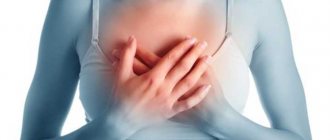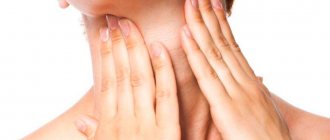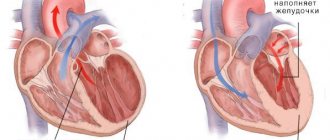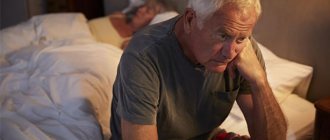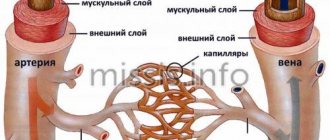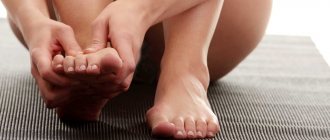“Never sleep, people die in their sleep too often.”
Mark Twain.
From WHO statistics: It has long been no secret that sleep is given to a person to restore strength after being awake. But we are talking about healthy sleep! Only he is able to “unload” the human brain. Increasingly, people go to bed, but the next morning they find themselves more unhealthy and stressed than at the end of a hard day at work. “It’s all about bad sleep,” most will say, not realizing that the concept of “bad sleep” has long been a terrible diagnosis that leads to death. And sleep disturbances hide dysfunctions of the whole body! So, we will talk about breathing disorders during sleep.
What are sleep breathing disorders?
The inability of the lungs to saturate the tissues with oxygen is most often a consequence of prolonged nighttime cessation of breathing during sleep, otherwise apnea - which translated from ancient Greek means calmness or lack of breathing. Experts divide apnea into obstructive and central.
Obstructive sleep apnea syndrome (OSA) occurs due to obstruction, that is, narrowing of the upper airways. The muscles relax, the tongue sinks into the airways and prevents the flow of oxygen into the lungs.
Doctors call OSA a “disguised killer”, because it really works “under the guise” of seemingly “banal” snoring, to which everyone has become accustomed and has long since let it float freely. But oddly enough, snoring is a bell, in some cases an alarm bell: “you have a serious problem and it requires an immediate solution!”
not as bad as the breathing disorder that snoring “masks”
In turn, pauses in breathing during sleep can last a minute and be repeated more than 20 times per night.
, and the total amount is more than an hour. Ultimately, this sleep disorder leads to hypoxia of the brain and other organs - the inability of oxygen to saturate the body. All this leads to a serious imbalance in the body.
Untreated obstructive sleep apnea results in death in three out of five cases.
.
First, a person complains of high blood pressure, then of uncontrolled weight gain, in some cases diabetes mellitus, chronic fatigue, apathy, coupled with cardiac disorders, leads to heart attacks and strokes. Unfortunately, people die without knowing that the culprit is not hereditary cardiovascular pathology or excess weight, but an insidious disease - obstructive sleep apnea syndrome
.
Apnea is also neurological in nature
.
And it's called central sleep apnea syndrome.
Symptoms that cause shortness of breath
Patients with the respiratory form of VSD experience breathing problems. Patients present the following complaints:
- feeling of lack of air;
- shortness of breath;
- feeling of incomplete inspiration.
Some patients complain of rapid, shallow breathing, they have a desire to take deep breaths of air, and a “sad sigh” appears. There may be a feeling of a “lump” in the throat or squeezing. It is difficult for the patient to be in a stuffy room; there is a need to open the windows. A constant feeling of lack of air during VSD is accompanied by dizziness, a feeling of anxiety, and fear of suffocation. Attacks of suffocation during VSD are possible.
What happens in this case?
Since central sleep apnea
is a consequence of a disorder of the central nervous system and differs from obstructive apnea in that it is dependent on a neurological plan, and not a physiological one, this means that breathing disorder during sleep occurs from the brain.
Sleep and breathing disorders occur in the part of the brain that controls breathing. With central sleep apnea, the airways are completely free for air to enter. Central sleep apnea syndrome
It is much less common, but doctors who deal with sleep problems should certainly know the nature of your “bad sleep.”
For this purpose, several years ago, a unique diagnostic device was introduced into the circulation of somnologists - polysomnography
.
What is polysomnography?
This is diagnostic equipment designed to give a complete description of sleep
and all functions of the human body during sleep, determine the nature of the sleep disorder.
Sleep diagnostics today is the only chance to make an accurate diagnosis
and “not to miss” in the unequal struggle of doctors with breathing disorders during sleep.
Poly
- from lat.
a lot
,
dubiously
-
sleep
,
graphy
-
writing
. Diagnosis of sleep using polysomnography is the diagnosis of breathing disorders during sleep.
Polysomnography involves studying the basic functions of the body during sleep under normal human conditions. In a simulated bedroom, breathing function, heart function, brain function, blood oxygen saturation level, motor activity of the chest and abdomen, the nature of snoring and much more are monitored. Based on the results of polysomnography, the doctor gives the patient a diagnosis over the next day. After this, the patient is offered treatment. CPAP therapy
(CPAP therapy)
is recognized throughout the world as the gold standard for the treatment of apnea .
Treatment of apnea with folk remedies
Modern treatment for sleep apnea is aimed at eliminating the factors causing the problem. These are not only medications, surgery or CPAP therapy, but also traditional medicine. Using folk remedies in combination with doctors’ recommendations is a good additional way to get rid of apnea.
It is worth using those folk remedies that contain natural substances of plant origin. The following are options that allow you to become, as practice shows, an excellent help in “traditional” treatment:
- Cabbage juice has long been used to treat breathing disorders. You need to add a teaspoon of honey to one glass of liquid, always freshly squeezed. Maybe a little more. The drink should be consumed every evening before bed for at least 1 month.
- Sea buckthorn oil. It will be enough to bury it in your nose, in each nostril, before going to bed for 2-3 weeks. The volume of one serving is 5 drops. This method will help eliminate the inflammatory process in the nasopharynx. The oil also has a healing effect and restores blood circulation in the tissues well.
- Carrots are an equally effective therapeutic remedy against snoring. It should be eaten baked. 1 root vegetable per 1 dose is enough. Take before breakfast, lunch and dinner - that is, 3 times a day.
Among the herbs that will help cope with breathing problems, the most effective are:
- Fenugreek. This herb has a good expectorant effect. It is useful for colds, and its seeds reduce the risk of heart disease and normalize cholesterol levels. True, the seeds have a rather bitter and pungent taste. But it can also be easily removed by soaking it in water. You need to hold them for several hours.
Soaked seeds without bitterness should be chewed well and eaten. A small handful “the width of your palm” will be enough. Therapeutic course – from 2 to 3 weeks. You can also grind the fruits in a coffee grinder and add 200 grams to them. hot water and drink it all before bed. If this option suits you, then do it for 3 to 5 weeks. The results are felt towards the end of the course.
- Eucalyptus, or rather its oil, is also an excellent remedy. It will free the nasopharynx from harmful bacteria. This method is safe and can be used even for children. The oily mass very gently promotes the removal of mucus, which is valuable for colds.
Up to 3-4 drops of oil are added to hot water and immediately begin to inhale the healing steam for five minutes. This is a productive product for inhalation; it is often used to fill an aroma lamp.
- Thyme. Its herb perfectly protects sleep, calms the nerves, which eliminates respiratory disorders, and makes sleep sound and restful.
Thyme oil is also used. It is added to clean water and thoroughly sprayed in the sleeping area daily. If you use a humidifier, add it directly to the device flask. In addition, thyme decoction will also relieve the problem. Place sprigs of the plant directly into the tea. Mint decoction has similar effects.
In addition to fruits, seeds and herbs, the following procedures are deservedly considered excellent options for traditional therapy:
- Moisturizing the mucous surface of the nose and throat with salt water. Do this before bed. You need to pour salt water into your palm and draw it in through one nostril, while closing the other. After this you need to blow your nose. Do the same with the second nostril. The mixture is prepared as follows: you need a teaspoon of rock salt, you can also dissolve sea salt in a glass of water. The temperature should be pleasant, warm. It is important that the salt does not contain dyes or additives. The duration of one procedure is up to 20 minutes.
- Yoga class. The exercises are the simplest, they are performed 25 times in the morning, and can be repeated before bed. If you push your tongue as far forward as possible, lowering it towards your chin, and hold it for 2 seconds, this is useful for eliminating respiratory disorders. To enhance the effect, you need to press on your chin and move your jaw with some force.
And one more thing - namely... singing. Don’t be surprised, this is also a way to get rid of the initial form of respiratory distress, perhaps not a “folk” one, but rather a “physical education” one. 30 minutes every day. Singing, that is, tensing the larynx, will strengthen its muscular corset.
Of course, folk remedies themselves will be, to put it mildly, useless without “medical” treatment. Therefore, remember that “non-traditional therapy” will help eliminate breathing problems, provided that all doctor’s instructions are strictly followed.
What is the treatment for sleep disordered breathing?
CPAP therapy appeared in 1981
.
This small device was created specifically for the treatment of sleep apnea by Australian professor of medicine Collin Sullivan. CPAP therapy is artificial ventilation of the lungs, which occurs through a small compressor. A tube with a mask is attached to the compressor. Coming out onto the tube and then onto the mask (which is attached to the patient's face), a constant stream of air flows directly into the respiratory tract
. CPAP machine therapy is used by doctors and patients to treat sleep apnea, snoring, respiratory failure, insomnia, depression and other sleep problems.
It is worth noting that CPAP therapy can only be prescribed by a doctor, after diagnosing sleep - polysomnography.
Treatment of apnea and snoring with CPAP therapy can last a year, in some cases a lifetime.
Patients get rid of bad sleep once and for all, they begin to lose weight, their blood pressure returns to normal, the problem of snoring “dissolves”, healthy sleep takes pride of place in a person’s bedroom! Having slept well once, as a rule, patients never part with their CPAP machine! Moreover, modern CPAP machines weigh no more than 2-3 kg and can be used not only at home and away, but also on business trips, on vacation, in the car and even on an airplane!
Prevention of apnea BEFORE and AFTER treatment
Apnea is not a harmless breathing disorder, as the increase and intensification of symptoms over time causes serious complications. Therefore, prevention is needed both before and after treatment.
"BEFORE"
Before therapeutic measures, prevention makes it possible to identify the causes of the disease and suppress their further development:
- In the first place is timely examination of somatic diseases and their treatment. We are talking about the thyroid gland, brain, ENT organs, lungs and heart. Systematic monitoring of sugar levels, thyroid hormones, and blood pressure are mandatory parts of the preventive program.
- Control of body weight and its systematic reduction if the excess is more than 10% of the standard is of great importance.
- It is very important to give up habits that are always and everywhere considered harmful. These include alcohol and smoking, stress and a night work schedule.
- You cannot do without regular aerobic exercise - swimming and walking, competitive sports and cycling.
If breathing difficulties are caused by anatomical defects, then you should think about surgical correction of a deviated nasal septum or enlarged tonsils.
"AFTER"
When apnea is over, this does not mean that you can now “release the brakes.” Patients must follow simple rules aimed at consolidating the positive results achieved.
- Eat a low-calorie, vitamin-rich diet
- Limit your intake of carbohydrates and fats, especially hard fats
- Eat food no later than 3, or preferably 4, hours before going to bed
- You may benefit from sleeping on your side or stomach. Place your head and spine at the same level in bed
- Ensure normal humidity in the sleeping area
To prevent the disorder from returning or worsening, practice going for a massage. A good help is soothing baths before bed. This will allow you not only to get a good night's sleep, but also to forget about restless nights forever.
Breathing disorders during sleep in patients with COPD
Patients with chronic obstructive pulmonary disease (COPD)
for physiological reasons, have rapid shallow breathing, which occurs during REM sleep.
As a result, alveolar ventilation decreases and the level of hypoxemia increases - all this leads to additional disorders. Doctors call this situation “crossover syndrome
.
Treatment of breathing disorders during sleep in patients with COPD consists of “unloading” breathing during sleep using the same CPAP therapy. Treatment of breathing disorders during sleep in such patients does not exclude treatment of the primary disease - COPD with oxygen therapy
.
As with the treatment of OSA, treatment for sleep disordered breathing in patients with COPD is prescribed by a doctor after diagnosing sleep and diagnosing sleep disordered breathing (polysomnography). Symptoms of sleep-disordered breathing that should prompt you to seek medical help:
- You snore.
- Difficulty breathing during sleep and immediately after waking up.
- Frequent awakenings during sleep.
- Increased urination at night.
- Nightmares.
- Headache in the morning.
- Fainting immediately after waking up.
- Sharp weight gain over the past 2 years.
- High blood pressure.
- Sleepiness during the day.
- Absent-mindedness.
- Irritability.
- Unmotivated depression.
- Shortness of breath while walking or doing exercise.
OSA does not have to present with all of the above symptoms. Just snoring or just obesity is enough! This is the insidiousness of OSA
. People mistakenly believe that poor sleep is associated with nightmares, excess weight with depression, shortness of breath with excess weight, snoring with a difficult day, headache with something else, and this chain closes on ignoring the symptoms. A person does not see a doctor because he cannot accept the idea that all this is a manifestation of a serious illness.
American doctors even compiled statistics on sleep-disordered breathing problems and came to the sad conclusion that every second person dies from the consequences of a sleep disorder
due to simple ignorance about their diagnosis, as well as a frivolous attitude towards the problem of snoring.
And remember, treatment for sleep disordered breathing begins with a sleep diagnosis! Making an accurate diagnosis and systemic treatment will not only relieve you of bad sleep and return you to a normal healthy life, but will also prolong your life for many years! After all, OSA and the problem of snoring in themselves are not as terrible as what they lead to - cardiovascular diseases and death.
Don’t forget, health is, first of all, healthy sleep!
Other causes of shortness of breath while lying down
Orthopnea may indicate a number of other diseases, primarily damage to the heart and blood vessels. “Cardiac” dyspnea develops against the background of impaired blood outflow from the pulmonary circulation and left ventricular failure due to damage to the heart muscle (myocardium), heart valves and/or coronary vessels4.
A common cause of orthopnea is heart failure. This is a syndrome that develops as a result of various diseases of the cardiovascular system associated with a decrease in the pumping function of the heart. In this case, the heart is not able to pump as much blood as the body needs for the proper functioning of all organs and systems. Blood can accumulate (stagnate) in the veins, lungs, and other tissues, putting even more strain on the heart7.
Heart failure can be asymptomatic for many years. As the disease progresses, signs of illness appear. The most common are shortness of breath, including when lying down, palpitations, fatigue, and chest discomfort7.
In addition, orthopnea can develop when3,8:
- Large accumulation of fluid in the abdominal cavity - ascites. Its causes may be severe liver damage, malignant neoplasms, and heart failure.
- Bilateral paralysis of the diaphragm due to trauma to the chest, upper spine and a number of diseases.
- Pompe diseases. According to the American Association of Neuromuscular and Electrodiagnostic Medicine, it may be indicated by a complex of symptoms: weakness of the lumbar girdle, especially the pelvis, winged shoulder blades, orthopnea and weakness of the back muscles, weakness of the respiratory muscles.
- Severe obesity.
- Severe pneumonia (pneumonia).
But osteochondrosis can cause shortness of breath during exertion and in an upright position, which is associated with damage to the thoracic spine9.

